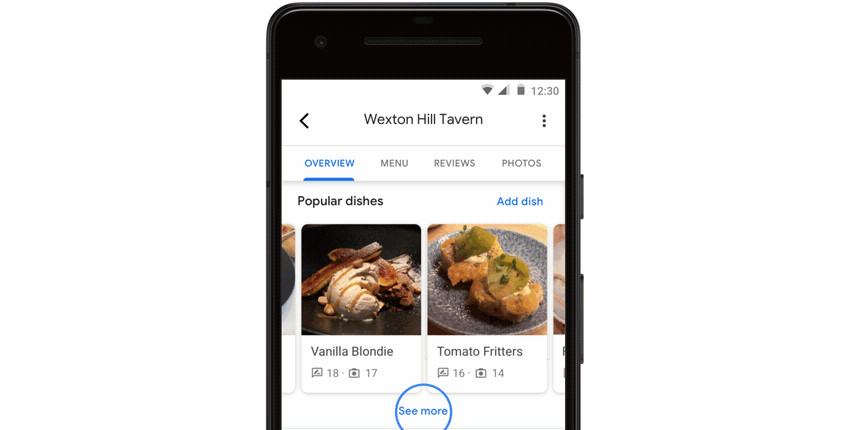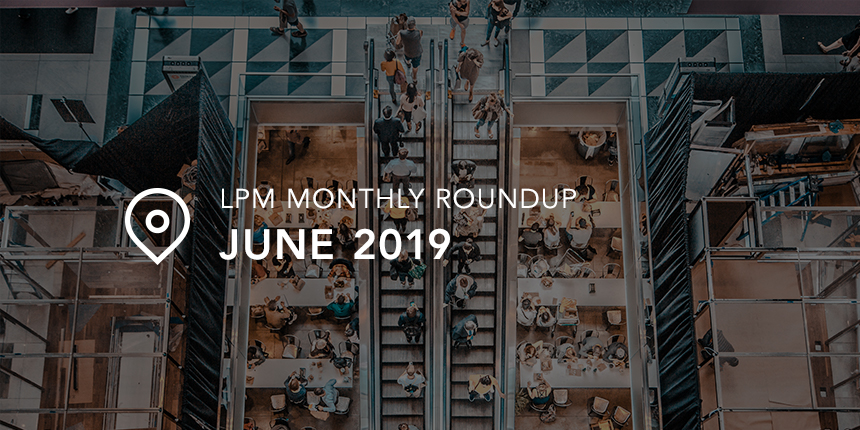June was an eventful month in the world of local listings. Although Google’s core algorithm update took all the headlines, other changes have taken place that affect not only how listings are ranked but also some fundamental functionality. So let’s take a closer a look at how the local landscape has continued to evolve over the last few weeks.
Google’s latest core algorithm update
Okay, let’s start with the obvious one. Google’s June 3 algorithm update came with a disclaimer: nothing particularly big or special should happen as a result, and no specific industries are targeted (unlike the Medic update). But, a few weeks after the update’s launch, some observations have been made regarding new ranking results.
Google’s search update seems to be leading to greater diversity of results, with the first page now presenting fewer links to identical domains and subdomains. This has been seen across all types of websites including retailers, news outlets, and gambling. Of course, Google has not at all limited itself to one link per domain, and still does show multiple links to the same website if deemed relevant to the query. However, some sites which may have dominated a specific query with just their domain are seeing losses with this new update.
It is still early in this update’s life cycle to understand its full impact. Unsurprisingly, Google has stated that there is no way to “fix” your website if negatively impacted by this update. The intent is to give a better user experience rather than to fight spam or lower the rankings of sources deemed untrustworthy by Google. Webmasters are to follow the same SEO best practices as before with no need to change their behaviours to accommodate the June update.
Google Maps to add “Popular Dishes” tab to restaurant listings
Google released a host of important new features for Google My Business (GMB) as well as some industry-specific updates, including a new “Popular Dishes” section for restaurant listings. Users on Android phones will have a section in which they can view images and review mentions of a restaurant’s signature food and drink. Google will be matching photos and reviews supplied by its users to populate this new tab. This is especially impactful for restaurants in areas with a lot of tourism. Photograph-worthy food and drinks will be a draw for many diners and these dishes will be easier to find with this new tab.

Restaurant owners should keep this in mind to encourage more reviewers to specifically mention the names of the dishes they enjoyed in their reviews. As the Popular Dishes tab is planned to be powered mostly by a machine learning algorithm rather than just the listing owner themselves, owners should plan to guide their customers along to help provide the information that will fuel this algorithm. The Popular Dishes tab will be compatible with iOS in the coming months.
Google Q&A is now auto-suggesting answers with reviews
Google’s Q&A feature is receiving an update to start answering user questions before they are even posted. Previously, a user posted their question on a listing and then were either given a reply by the business owner or by the public. Now, as users type in their question, Google will automatically pull potential answers to their queries from the business’s existing reviews. This feature has recently been updated to 100% source its suggested answers from reviews and will not take previously posted answers into consideration.
So owners now have even less control of how questions on their listings are answered. They’re now even more dependent on their customer feedback. Businesses are going to need a breadth of content in their reviews, covering all aspects of their business. Reviews will need to come in at a steady pace as well—information pulled from a three-year-old review may not be deemed relevant by a user.
Responding to reviews is one method of encouraging text filled reviews from users and as Google continues to source reviews for content, businesses should take every advantage they can to pull in more feedback.
Local scroll pack testing
Google has begun a new test of its UI—a test so ubiquitous that it is highly likely to be implanted as a full update in the near future. The local three pack is being displayed in a new way for some users as a “local scroll pack”. This scroll pack includes five results with large image thumbnails that scroll from right to left.
One noticeable change to this new UI is that there are no calls to action in the primary or secondary views. This new UI requires a click to the profile in the Local Finder and then another into the Business Profile to call or get driving directions. Service Area Businesses did not include images; instead, click to call was their only visible call to action without visiting the Local Finder.
The large number of tests suggests the local scroll pack is prepping for a launch. But in its current state, this update could have a major impact on GMB insights. As the scroll pack shows five results instead of the local pack’s usual three, there may be a greater number of views for listings. However, the lack of calls to action would mean even with increased view count, KPIs for a listing’s performance may be lower than expected.
Solo and multi-practitioner businesses
Google has made a positive change to how it handles multi-practitioner businesses, meaning businesses that contain multiple different professionals all working from the same address (such as doctors or lawyers). Google will now remove listings instead of only offering to put a “closed” notification.
There are three common reasons why a single practitioner would no longer work at a given location.
- Retirement: Previously in the case of retirement, Google’s standard was to mark your listings as closed. This had the largely negative consequence of suggesting to users the entire office building may have been closed. Now in the case of retirement, Google will entirely remove the single practitioner’s listing from Google Maps if specifically requested.
- Death: Just as above, a listing would formally be labeled as closed. Along with the confusion of the state of the office as a whole, it was in poor taste to mark a business as closed due to someone’s passing. Google will now remove these listings upon request instead.
- Resignation: This scenario remains identical. The course of action it to update the listings with new location information. As Google considered the owner of the practitioner listing the person it names rather than the business they work for, the practitioner has total control.
Solo-practitioner businesses are affected too
It is common for solo-practitioner dentists and insurance agents to have their business’s purchased by another business. Google My Business in the past did not update these listings to list the new practitioner which has taken over. The default response was to simply mark these listings as closed. This could be particularly disadvantageous to solo-practitioners as it would mean marking their sole listing as closed which old customers may be directed to before seeing their new open listings. Google will now remove the obsolete listing in its entirety to not confuse customers with false information.
So… Where to start?
The rapid evolution of local is exciting to see, but it also makes it challenging to keep tabs on the latest happenings—and, more importantly, understand which changes are most likely to affect your business. But we can take care of all the hard work on your behalf. Simply contact DAC today and let’s chat local presence management .




